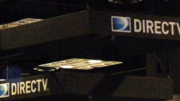Tonight we’re gonna watch TV like it’s 1999.
Literally.
Back in 1999, two new products hit the market. At the time no one could decide whether to call them “personal video recorders” or “digital video recorders,” but devices from TiVo and ReplayTV opened up a whole new frontier of television watching. Those pioneering devices, priced at over $1,000, offered a meager amount of recording space, similar to one VHS cassette. But, they did something no VCR could manage: they let you pause live TV, back up, and even start watching a recording while you were still recording it.
Today this all sounds like old news, but a generation ago it was earthshattering. In those days, serious TV watchers used two or three VCRs to record the week’s shows, which needed to be watched in order since there was no way to be sure you could record over a show in the middle of a tape without losing the beginning of the next show. And if you wanted to watch one show while taping another, it required some serious wiring skills.
DVRs, as they were eventually called, gave everyone the ability to pause, replay, and start a show from the beginning. It was a revolution and while it took close to a decade to become common in every home, by 2009 the DVR was just another part of the home entertainment system and the VCR, if you still had one, was in the closet gathering dust.
The days of the DVR might be short-lived, however. Almost as quickly as it rose, the DVR’s usefulness came under attack from streaming services. By 2015, only six years after the DVR hit the “tipping point” where average customers saw and used it, services like Hulu were offering on-demand programming through the internet. You didn’t have to record anything, as long as you could get it on Hulu the next day. People adapted. Not only that, but cable and satellite companies jumped on the “on-demand” bandwagon too, meaning that you just didn’t need to record as much as you thought. TiVo, despite a string of successful products, was sold to Rovio, a company known for patent licensing. ReplayTV folded and its patents were bought by DIRECTV. The DVR, though commonplace, didn’t feel like a winner.
But at least the DVR had one thing going for it — the ability to timeshift. On-demand programs were easy to pause and rewind, and people grew comfortable with the idea of pausing a program when the phone rang, when someone was at the door, or when nature called. The DVR continued to be an essential part of that value equation, as it brought pausing and rewinding to live TV. “Timeshifting,” as it’s been called, is the primary reason for a DVR these days… watching something just a few minutes behind.
There’s some sign that timeshifting isn’t important anymore, at least not for millennials who increasingly ignore TV schedules and simply watch everything on demand. For older folks, though, it’s still an important part of the TV-watching experience and it’s something that most people do still use. It’s the number one reason people say they don’t want to switch to an antenna-based solution; they don’t want to miss the ability to timeshift.
Luckily, we’re starting to see some innovative solutions on the horizon. From what I’m hearing from other manufacturers, we’ll soon see a large number of new and interesting devices designed to bring timeshifting to antenna TV without a large upfront cost like we see now. There are antenna-only DVRs, but unfortunately they either have a high upfront cost or a monthly fee. Neither of these are terribly appealing, but a solution might be just around the corner.





